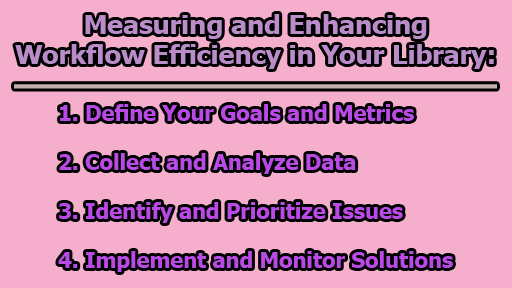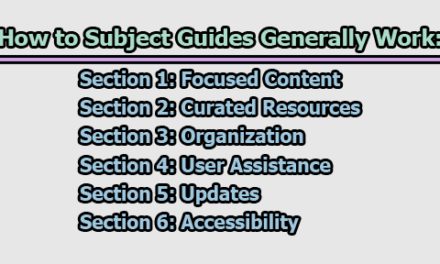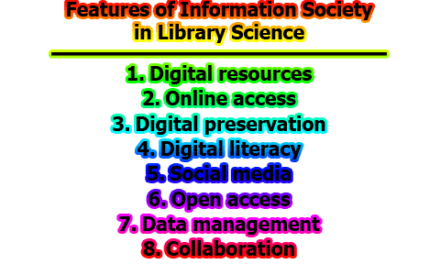Measuring and Enhancing Workflow Efficiency in Your Library:
Efficiency is a crucial factor in the success of any library. A well-organized, cost-effective, and high-quality workflow not only ensures the smooth operation of the library but also plays a pivotal role in user satisfaction and staff morale. To assess and enhance your library’s workflow efficiency, it’s essential to follow a structured process. In this article, we will explore measuring and enhancing workflow efficiency in your library, ultimately leading to improved performance and user satisfaction.
1. Define Your Goals and Metrics: The journey to enhancing workflow efficiency starts with clearly defining your objectives and the metrics you will use to measure them. Consider the outcomes and outputs you want to achieve with your library’s services and resources. Some common metrics to consider include:
- Number of items circulated.
- Turnaround time for requests.
- Accuracy of cataloging.
- Usage of databases.
- Satisfaction of users and staff.
These metrics can be expressed using various methods, such as counts, rates, ratios, percentages, or scores. Defining these goals and metrics creates a clear benchmark against which you can evaluate your library’s performance.
2. Collect and Analyze Data: The next step is to gather data that aligns with your chosen metrics. There are several sources and methods for data collection, such as surveys, interviews, observations, logs, reports, or analytics. The choice of source and method will depend on the type and quantity of data needed.
Once you have collected the data, it’s important to analyze it effectively. Tools such as spreadsheets, charts, graphs, dashboards, or statistical software can help you make sense of the information. Furthermore, you can use benchmarks, standards, or best practices to compare your data with those of other libraries or industry norms, providing valuable context for your assessments.
3. Identify and Prioritize Issues: With data in hand, the third step is to identify and prioritize issues that impact your library’s workflow efficiency. Several methods and tools can help pinpoint these issues, including:
- Gap analysis: Identifying discrepancies between your current state and desired state.
- Root cause analysis: Determining the underlying causes of problems.
- SWOT analysis: Assessing strengths, weaknesses, opportunities, and threats.
- Fishbone diagrams: Visualizing the root causes of issues.
In addition to these analytical tools, feedback from users and staff, expert suggestions, and literature reviews can provide insights into the causes and effects of workflow inefficiencies. Prioritization can be done using criteria like urgency, impact, feasibility, or cost, allowing you to focus on the most critical areas for improvement.
4. Implement and Monitor Solutions: The final step involves implementing and monitoring solutions to address the identified issues and enhance your library’s workflow efficiency. The implementation process may require methods like action plans, project management, change management, or quality assurance. Effective project management can help ensure that solutions are executed efficiently and on schedule.
Monitoring the solutions is equally important to track progress and outcomes. Indicators, targets, milestones, and evaluations are useful tools to measure the effectiveness of the implemented changes. To gain valuable feedback, you can involve users and staff, gather reports from stakeholders, or even seek external audits from relevant agencies.
In conclusion, measuring and enhancing workflow efficiency in your library is a structured and iterative process that can lead to improved performance, user satisfaction, and staff morale. By following these steps, you can pinpoint areas for improvement and develop practical solutions to address them. This not only benefits the library itself but also demonstrates its value and impact to the community and funders. With a commitment to continuous improvement, your library can thrive and better serve its users.

Library Lecturer at Nurul Amin Degree College










